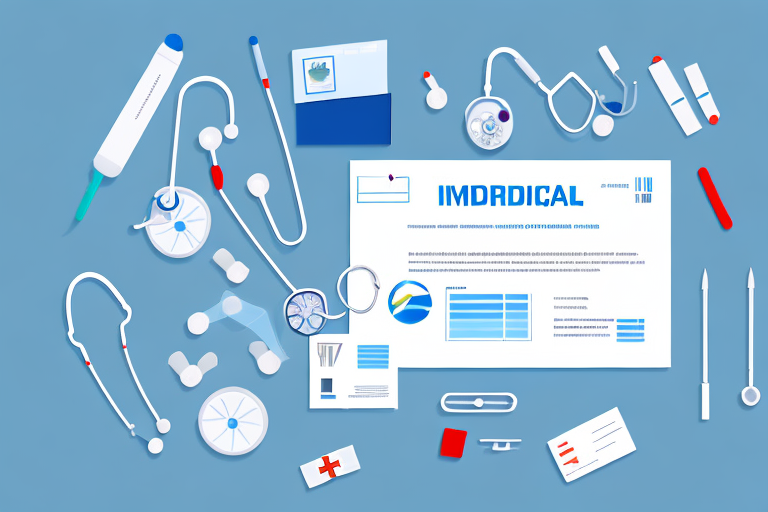In today’s globalized world, the importation of medical devices plays a crucial role in providing quality healthcare to patients worldwide. However, navigating the complex landscape of international import regulations can be a challenging task for manufacturers, distributors, and importers alike. In this comprehensive guide, we will explore the key aspects of complying with import regulations for medical devices, covering everything from understanding the importance of these regulations to implementing quality control measures and addressing unique challenges in importing implantable medical devices.
Understanding the Importance of Import Regulations for Medical Devices
Before delving into the specific requirements and processes involved in complying with import regulations, it is essential to grasp the vital importance of these regulations. Import regulations serve as a framework for ensuring the safety, efficacy, and quality of medical devices entering a country’s market. By imposing strict standards and guidelines, regulatory bodies aim to protect public health and prevent substandard or unsafe medical devices from reaching patients. Compliance with import regulations is not only a legal requirement but also a fundamental ethical responsibility for all stakeholders involved in the importation process.
Furthermore, import regulations also play a crucial role in promoting fair competition and fostering innovation in the medical device industry. By setting clear guidelines and requirements, these regulations create a level playing field for manufacturers and distributors, ensuring that all products meet the same standards of safety and quality. This not only protects consumers but also encourages companies to invest in research and development, leading to the development of more advanced and effective medical devices.
Key Regulatory Bodies and Standards for Medical Device Imports
Across different regions and countries, various regulatory bodies oversee the importation of medical devices. Understanding these regulatory bodies and their standards is crucial for compliance. In the United States, the Food and Drug Administration (FDA) plays a central role in regulating medical devices, ensuring their safety and effectiveness. Similarly, the European Union (EU) has established the Medical Device Regulation (MDR) and In-vitro Diagnostic Medical Device Regulation (IVDR) to harmonize standards for medical devices across member states. Other countries, such as Canada, Australia, and Japan, have their own regulatory bodies and standards that importers must adhere to.
The standards set by these regulatory bodies encompass various aspects, including product design, manufacturing processes, labeling, packaging, and post-market surveillance. Compliance with these standards requires meticulous attention to detail and a thorough understanding of the specific requirements outlined by each regulatory body.
It is important to note that regulatory bodies and standards for medical device imports are constantly evolving and being updated. Importers must stay informed about any changes or new requirements introduced by these regulatory bodies. This may involve regularly reviewing official websites, attending industry conferences, or consulting with regulatory experts to ensure ongoing compliance with the latest standards.
The Basics of Importing Medical Devices
Importing medical devices involves a complex set of procedures and requirements that importers must navigate to ensure compliance. Before initiating the importation process, it is crucial to conduct extensive research and due diligence to understand the specific regulations in the destination country. This includes identifying the applicable regulatory body, studying the country’s import laws and procedures, and familiarizing oneself with the necessary documentation and labeling requirements.
An essential aspect of importing medical devices is determining the device’s classification. Regulatory bodies classify medical devices into different classes based on their risk level. The classification determines the level of scrutiny and the necessary documentation required for importation. Importers must accurately identify and classify their medical devices to comply with the appropriate regulations.
…….multiple paragraphs to cover all points in exhaustive detail…….
Another important consideration when importing medical devices is ensuring proper packaging and labeling. Each country may have specific requirements for how medical devices should be packaged and labeled to ensure safety and compliance. This may include guidelines for labeling language, symbols, and warnings, as well as requirements for packaging materials and sterilization methods. Importers must carefully review and adhere to these packaging and labeling requirements to avoid any delays or issues with customs clearance.
Staying Up-to-Date with Changing Import Regulations and Industry Trends
As the field of medical device imports is constantly evolving, it is imperative for importers to stay up-to-date with changing import regulations and industry trends. Regulatory bodies regularly update their requirements and introduce new regulations to adapt to emerging technologies and ensure patient safety. Importers must actively engage in continuous education and keep abreast of regulatory changes through industry resources, conferences, and participation in relevant trade associations. Additionally, maintaining strong relationships with regulatory authorities and industry professionals can provide valuable insights into anticipated changes, helping importers navigate new requirements effectively.
In conclusion, complying with import regulations for medical devices is a multifaceted process that requires a comprehensive understanding of the regulatory landscape, meticulous attention to detail, and ongoing engagement with industry developments. By understanding the importance of import regulations, identifying key regulatory bodies and standards, implementing necessary procedures and controls, and staying informed about changes in regulations, importers can navigate this intricate landscape efficiently and ensure the safe and effective importation of medical devices.
Furthermore, importers should also consider leveraging technology to streamline their compliance processes. Implementing automated systems and software solutions can help importers stay organized, track regulatory changes, and ensure timely submission of required documentation. These tools can also provide real-time updates on industry trends and regulatory updates, allowing importers to adapt their strategies and stay ahead of the curve. By embracing technology, importers can enhance their efficiency, reduce errors, and maintain compliance with import regulations in a rapidly changing landscape.


